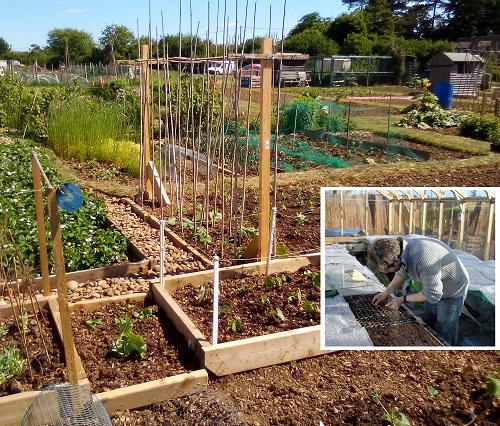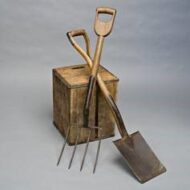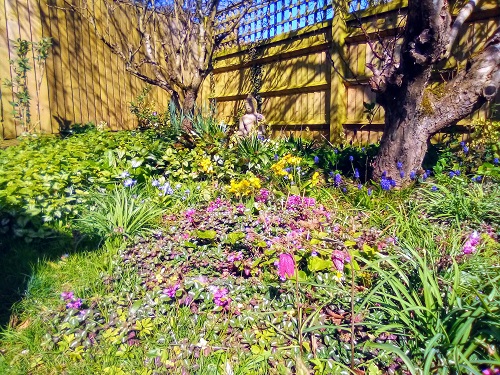Spring is here so we expect sunshine and showers, and to be wary of the frosts, even into May. For the most part we have missed the icy ground and snowfall this year. But the winds! In between storms there was plenty of opportunity to be out on the allotment to tidy up from last years’ endeavours. Not least, to finish spreading the manure, pick the last sprouts and leeks of 2021 before the “hungry gap”, and make ready for the first outdoors planting of the season.

In the garden we expect to see blue tits in our nesting-box again this year. Meantime, a bit of judicious Wisteria pruning in the autumn has hopefully reduced the nesting real-estate for annoying pigeons. Last year in the Clematis next to our front door, a thrush was in a trance-like state on her nest, awaiting the hatching moment. We always slipped by quietly, trying to avoid eye contact. Here also, autumn Clematis pruning made sure that nesting sites – desired ones – were undisturbed in springtime.
March activity in the greenhouse (and windowsills too) usually gives us sturdy plants for the April and May soil. Well-established seedlings in plugs or trays can now be sown outdoors into those (hopefully!) well-prepared, warm-enough beds. For us this includes cabbages, brussels, courgettes, chard and lettuce, even early beet. And tomatoes. These latter we like to spread between selected sunny areas outside (from late May) – and in the greenhouse where we have good control over watering, light and warmth. Always nice to see the differences in quality and numbers between the two approaches.
And why plugs? For us it’s a good discipline: in the deep past we were usually too eager to plant direct in the soil in early spring months. Pests and weather-induced failures would be frequent – even when trying to protect from frosts. To use plugs has twin benefits: controlling the seeds to avoid waste and having the joys of seeing those seedlings grow early in the season, protected and nurtured. Cold frames are always useful for gardeners without a greenhouse. Later in the season, direct planting is fine – but we find, never obligatory – except for root crops such as parsnips and carrots.
Meantime, more plugs ….! Our January Cheese and Wine event was sadly cancelled because of Covid misgivings. But with restrictions lifting, we look forward our April 27th talk, and to cheese and wine a’plenty at our rescheduled June 22nd AGM.
On another note, the pandemic has certainly given us all time to reflect. As a result, several committee members plan to move on, and so for 2022 we are actively asking for new volunteers to join the committee, so that MUWAGA continues to flourish.
Finally, we are delighted that our new website is now up and running. As well as showing MUWAGA events updates, this is an exciting new place for members to contribute their own stories, ideas, experiences and advice. Do please get in touch to see how to contribute.
As the man nearly said: “Let us hoe then, you and I”!

